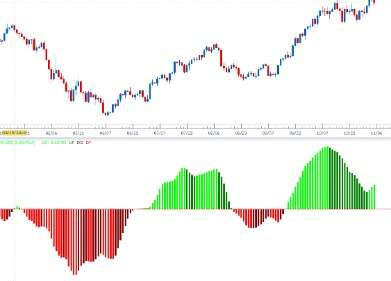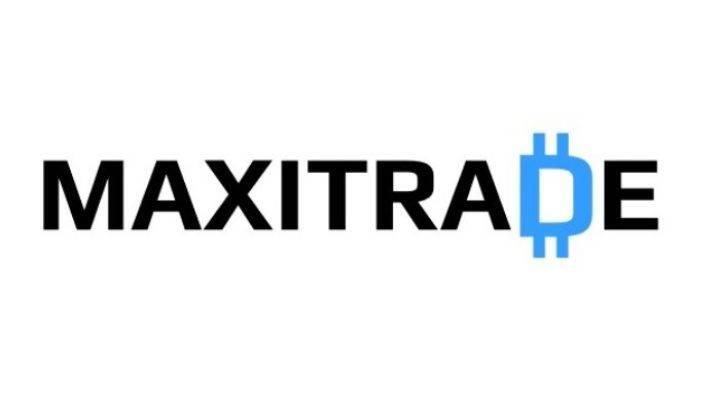
Some Marxian economists argue that Marx thought the possibility of measuring surplus value depends on the publicly available data. We can develop statistical indicators of trends, without mistakenly conflating data with the real thing they represent, or postulating “perfect measurements or perfect data” in the empiricist manner. what is owner’s equity Jared Lewis is a professor of history, philosophy and the humanities. A former licensed financial adviser, he now works as a writer and has published numerous articles on education and business. He holds a bachelor’s degree in history, a master’s degree in theology and has completed doctoral work in American history.
With the money that we raise from selling stocks, we’re going to open up two more stores. This website is using a security service to protect itself from online attacks. There are several actions that could trigger this block including submitting a certain word or phrase, a SQL command or malformed data. https://online-accounting.net/ A member bank shall use the date a dividend is declared to determine compliance with this section. Principles of Macroeconomics Copyright © 2016 by University of Minnesota is licensed under a Creative Commons Attribution-NonCommercial-ShareAlike 4.0 International License, except where otherwise noted.
Thurow goes on to note that “When it comes to actually measuring profits, some difficult accounting issues arise.” Why? Because after deduction of costs from gross income, “It is hard to say exactly how much must be reinvested to maintain the size of the capital stock”. Ultimately, Thurow implies, the tax department is the arbiter of the profit volume, because it determines depreciation allowances and other costs which capitalists may annually deduct in calculating taxable gross income. A very simple example would be if somebody sold a second-hand asset at a profit. This transaction is not recorded in gross product measures (after all, it isn’t new production), nevertheless a surplus-value is obtained from it.
Capital Surplus and Reserves on the Balance Sheet
In practice, stock donations are the least common source of capital surplus since they are rare. Paid-in capital tells an analyst how much money has been invested in a business, and earned capital tells the analyst how much money has been generated by the company’s operations and investments. A capital surplus is also called additional paid-in capital or a share surplus.

Businesses may deliberately run budget deficits to maximize future earnings opportunities—such as retaining employees during slow months to ensure themselves of an adequate workforce in busier times. A surplus occurs when there is some sort of disconnect between supply and demand for a product, or when some people are willing to pay more for a product than others. Hypothetically speaking, if there were a set price for a certain popular doll, that everyone was unanimously expected and willing to pay, neither a surplus nor a shortage would occur.
Production versus realisation
Effectively it is not labour which the worker sells, but his capacity to work. Two measures of the value of this use, here present themselves; the measure of the laborer, and the measure of the capitalist. Surplus is the amount of an asset or resource that exceeds the portion that is utilized. To calculate consumer surplus one merely needs to subtract the actual price the consumer paid by the amount they were willing to pay.
- Therefore, a company with a healthy capital surplus can be attractive to investors who are looking for a stable and profitable investment opportunity.
- So, without getting into too much of the nitty gritty accounting that would turn this into a valuation question, let’s say we are going to put 30% of the company up for sale with these stocks, leaving you and me with 35% each.
- The overriding motive behind efforts to economise resources and labor would thus be to obtain the maximum possible increase in income and capital assets (“business growth”), and provide a steady or growing return on investment.
- The par value of these shares in the company’s resolution is $100 per share.
- For example, a manufacturer who over-projects future demand for a given product may create too many unsold units, which may consequently contribute to quarterly or annual financial losses.
Many firms authorize shares with some nominal par value, often the smallest unit of currency commonly in use (such as one penny or $0.01), in many jurisdictions due to legal requirements. The firm may then sell these shares for a much higher price (as the par value is a largely archaic and fictional concept). (2) A member bank may not permit any portion of its permanent capital to be withdrawn unless the withdrawal has been approved by the Board and by at least two-thirds of the shareholders of each class of stock outstanding. (7) Mortgage servicing assets means the national bank-owned rights to service for a fee mortgage loans that are owned by others. In neo-Marxist thought, Paul A. Baran for example substitutes the concept of “economic surplus” for Marx’s surplus value. In a joint work, Paul Baran and Paul Sweezy define the economic surplus as “the difference between what a society produces and the costs of producing it” (Monopoly Capitalism, New York 1966, p. 9).
Capital Surplus
And we go and find investors who will actually pay us $5 per share for our ice cream shop business. But when we record that in our accounting, $5 in total capital per share was contributed by investors to the business and is recorded as shareholder’s equity. $1 per share (totalling $30,000) goes towards actual shares outstanding, and $4 per share (totalling $120,000) goes towards capital surplus. (2) Permanent capital means the total of the bank’s perpetual preferred stock and related surplus, common stock and surplus, and minority interest in consolidated subsidiaries, as reportable in the Reports of Condition and Income.
3 In the case of dividends in excess of net income for the year, a bank generally is not required to carry forward negative amounts resulting from such excess. Instead, the bank may attribute the excess to the prior two years, attributing the excess first to the earlier year and then to the immediately preceding year. If the excess is greater than the bank’s previously undistributed net income for the preceding two years, prior Board approval of the dividend is required and a negative amount would be carried forward in future dividend calculations. However, in determining any such request for approval, the Board could consider any request for different treatment of such negative amount, including advance waivers for future periods. This applies only to earnings deficits that result from dividends declared in excess of net income for the year and does not apply to other types of current earnings deficits. The limitations in this section on the payment of dividends and withdrawal of capital apply to all cash and property dividends or distributions on common or preferred stock.
When Should a Company Fund With Preferred Stock Instead of Common Stock or Debt?
Most companies maintain this account as a part of the accounting requirements to separate the additional amounts. However, accounting standards require them to separate them into several accounts. Any surplus on the transaction ends up on the capital surplus account. Treasury stock is all the company’s stock that the company has reacquired.
Hurricane Idalia: Winners and losers as loss estimates decline – Inside P&C
Hurricane Idalia: Winners and losers as loss estimates decline.
Posted: Tue, 05 Sep 2023 11:42:59 GMT [source]
To do this, we will use the equilibrium condition for foreign exchange markets given in Equation 15.2. We will see that the balance between a country’s purchases of foreign assets and foreign purchases of the country’s assets will have important effects on net exports, and thus on aggregate demand. In this example, GreenEnergy Corp. records a capital surplus of $19,900,000 on its balance sheet under the shareholders’ equity section. This amount represents the excess funds the company has raised from investors above the par value of its shares. These funds can be used to support the company’s growth, pay off debt, or invest in new projects, but they cannot be directly paid out as dividends to shareholders.
Somebody has tried to be smart on wikipedia and have done the calculations without much explanation. If ABC Company were to sell 100 shares of its $1 par value common stock for $9 per share, it would record $100 of the $900 in total proceeds in the Common Stock account and $800 in the Additional Paid-in Capital account. In earlier days, the $800 entry to the Additional Paid-In Capital account would instead have been made to the Capital Surplus account. Excess after the revaluation of liabilities and assets, cash from the selling of assets, and premiums from shares and debentures are some examples of capital reserves.
In an analysis of the market for Japanese yen, for example, yen are supplied when people, firms, and government agencies in Japan purchase goods and services from the rest of the world. Yen are also supplied so that holders of yen can acquire assets from other countries. A second simplification will be to treat payments to foreign owners of factors of production used in a country as imports and payments received by owners of factors of production used in other countries as exports.
The following briefly describes a few examples of the reserves you might come across and will give you a sense of their purpose on the balance sheet. It may also be used to account for any gains the firm may derive from selling treasury stock, although this is less commonly seen. Some other scenarios for triggering a capital surplus include when the Government donates a piece of land to the company. (3) Intangible assets means those purchased assets that are to be reported as intangible assets in accordance with the Instructions—Consolidated Reports of Condition and Income (Call Report). The problem here is that Thurow doesn’t really provide an objective explanation of profits so much as a moral justification for profits, i.e. as a legitimate entitlement or claim, in return for the supply of capital. (8) Perpetual preferred stock means preferred stock that does not have a stated maturity date and cannot be redeemed at the option of the holder.
Sellers are constantly competing with other vendors to move as much product as possible, at the best value. If demand for the product spikes, the vendor offering the lowest price may run out of supply, which tends to result in general market price increases, causing a producer surplus. The opposite occurs if prices go down, and supply is high, but there is not enough demand, consequently resulting in a consumer surplus. The merging of two businesses can be a good thing for all involved when the two businesses are able to properly allocate their shared resources for profit. However, a merger results in a number of paperwork issues that have to be resolved. For instance, accountants need to know what to do with capital surplus on the balance sheet once the merger is complete.
How do companies create Capital Surplus?
Retained earnings, in contrast, represent accumulated profits over the years after deducting dividends. They are a source of internal finance which depends on financial performance. When companies issue their stocks at a premium to par or stated value, they generate a capital surplus. When companies issue shares at a premium, they receive more funds.
